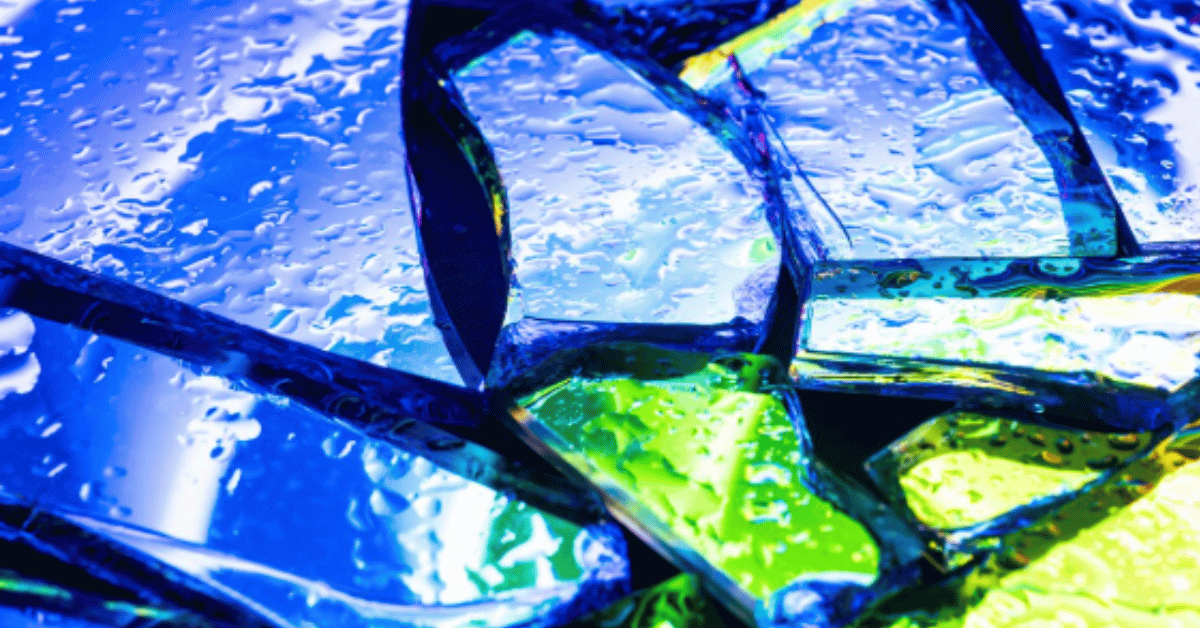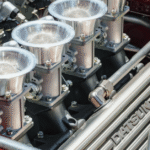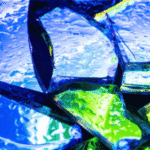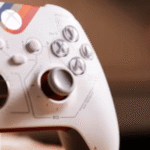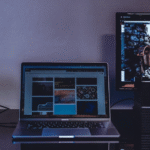Painting metallic is not merely about adding a layer of color; it’s about crafting reflections that speak sophistication, innovation, and durability. In the first glance, a metallic paint finish transforms the ordinary into the extraordinary — cars gleam, interiors glow, and industrial structures come alive with resilience and shine. The purpose of painting metallic surfaces goes beyond aesthetics; it blends science and artistry, ensuring long-lasting protection while capturing light in ways matte finishes never can. This article delves deep into the evolving world of metallic painting — from its composition and methods to the psychological impact of reflective surfaces and future trends in sustainable metallic finishes. Whether you are a professional painter, a designer, or a curious DIY enthusiast, this comprehensive guide provides modern insights and methods to elevate your understanding of metallic painting in design and industry alike.
The essence of painting metallic lies in its chemistry and craftsmanship. Every metallic paint contains finely ground metal flakes or pigments, often aluminum, bronze, or copper, suspended in a binder. When applied, these flakes align in a way that reflects light at varying angles, creating a shimmer or sparkle effect. Today, metallic paints are used across multiple sectors — from automotive bodies and architectural elements to decorative art and consumer electronics. “The brilliance of metallic finishes,” as color theorist Edward Lanson once noted, “is that they invite the eye to explore the surface rather than simply observe it.”
The Science Behind Metallic Paints
Metallic paints are crafted to achieve a dynamic interplay between reflection and depth. The reflective pigments within metallic paints function as micro-mirrors. These microscopic flakes scatter and reflect light differently depending on their size, angle, and distribution. The base color coat determines tone, while the metallic flakes create luminosity. Over this, a transparent topcoat adds gloss and protection, sealing the finish from oxidation and environmental wear.
Most metallic paints contain aluminum as the primary reflective medium. However, modern formulations often incorporate composite or mica-based pigments to achieve more diverse and subtle effects. Unlike solid paints, metallic coatings require meticulous mixing and consistent spray techniques to ensure uniformity. Variations in spray distance or paint density can cause “mottling,” where uneven patches of brightness appear across the surface. Thus, precision is not optional — it is essential.
Evolution of Metallic Painting Techniques
Metallic painting dates back centuries, with roots in ancient metal gilding and bronze craftsmanship. Early artisans used powdered gold and silver mixed with oils or resins to decorate religious artifacts and architectural details. The industrial era revolutionized this tradition by introducing machine-milled metallic powders, allowing for consistent particle sizes and standardized finishes.
The automotive industry in the 20th century became the largest driver of innovation in metallic painting. From the chrome-rich cars of the 1950s to the sleek pearlescent finishes of the 1990s, each decade refined metallic texture and tone. Today, digital mixing systems and water-based metallic coatings have reduced environmental impact while enhancing precision. “Every new formulation of metallic paint,” said automotive designer Marcia Rhodes, “is an intersection of chemistry, art, and emotion — it’s the visual voice of modern design.”
Composition of Metallic Paints
| Component | Function | Typical Materials Used |
|---|---|---|
| Reflective Pigment | Creates shine and reflection | Aluminum, bronze, copper flakes, mica |
| Binder/Resin | Holds pigment and binds to surface | Acrylic, polyurethane, epoxy |
| Solvent | Adjusts paint viscosity for application | Water or organic solvents |
| Additives | Improve durability and color retention | UV absorbers, anti-settling agents |
| Topcoat | Protects surface and enhances gloss | Clear polyurethane or lacquer |
The performance of a metallic finish depends on the synergy of these components. A poorly balanced mixture can lead to dullness or premature fading, whereas a well-formulated paint enhances both optical brilliance and structural protection.
Tools and Equipment Required
Applying metallic paint requires specialized tools to achieve consistency. Airbrushes, HVLP (High Volume Low Pressure) spray guns, and electrostatic sprayers are commonly used. Each tool has its advantages; for example, HVLP systems minimize overspray and waste, while electrostatic sprayers ensure even distribution by charging the paint particles. Surface preparation tools, including fine-grit sandpaper, degreasers, and primers, are equally vital.
Professionals often stress that environmental control — temperature, humidity, and airflow — can make or break the result. A slight shift in humidity can alter how metallic flakes settle, impacting light reflection and texture. Maintaining a clean, dust-free workspace ensures the reflective pigments align uniformly for a glass-like sheen.
Types of Metallic Finishes
| Finish Type | Visual Effect | Common Applications |
|---|---|---|
| Fine Metallic | Subtle shimmer, smooth reflection | Home interiors, electronics |
| Coarse Metallic | Bold sparkle, visible texture | Automotive and industrial parts |
| Pearlescent | Color-shifting iridescence | Luxury vehicles, furniture |
| Brushed Metallic | Matte yet reflective lines | Architectural panels, appliances |
| Anodized Metallic | Deep tone with protective layer | Aerospace, marine coatings |
Each finish tells its own story. Fine metallics create understated elegance, while coarse and pearlescent styles convey dynamism and movement. The choice depends on the purpose — aesthetic appeal, durability, or functional reflectivity.
Techniques for Applying Metallic Paint
Painting metallic requires mastery of layering and timing. The process begins with thorough surface cleaning and priming. The first coat — the base — determines tone and adhesion. The second coat introduces metallic pigments, sprayed evenly in multiple thin layers to avoid clumping. The final clear coat seals and amplifies the metallic effect, ensuring depth and resistance against fading or corrosion.
A common practice among professionals is the “mist coat” technique, where a light final pass balances flake orientation and softens transitions. This method reduces streaking and enhances the evenness of reflection. For hand-painted or decorative applications, artists often use sponges or fine brushes to create metallic gradients, producing bespoke finishes for murals, sculptures, and architectural accents.
Environmental and Safety Considerations
The rise of eco-friendly practices has transformed metallic painting. Traditional solvent-based paints released volatile organic compounds (VOCs) that contributed to air pollution. Today, water-based metallic formulations reduce VOC emissions by nearly 80%, offering safer application without sacrificing shine. Moreover, modern recyclability standards encourage the use of biodegradable binders and low-toxicity additives.
Proper safety measures — including respirators, gloves, and ventilation — remain essential. Metallic pigments, though small, can irritate lungs or skin upon prolonged exposure. The future lies in nanotechnology, where ultra-fine metallic pigments can achieve higher luminosity with lower material use, further minimizing environmental footprint.
The Aesthetic Psychology of Metallic Paint
Metallic surfaces evoke emotion through their dynamic interplay of light and texture. They symbolize modernity, power, and progress. Psychologically, humans are drawn to reflective materials because they signal vitality and cleanliness — traits historically associated with luxury. Metallic paints in interior spaces, for instance, can amplify natural light and create perceptions of depth and sophistication.
In industrial design, metallic coatings signify strength and precision. Silver and chrome tones convey innovation, while warmer metallics like copper and gold evoke comfort and tradition. The visual energy of metallic hues influences consumer perception and emotional engagement with objects — a concept long studied in marketing psychology.
Modern Innovations and Digital Influence
The digital era has reshaped how metallic finishes are conceived and produced. Advanced software allows colorists to simulate lighting scenarios, ensuring that a metallic tone looks equally stunning under natural sunlight or LED light. Furthermore, metallic nanoparticles are being engineered for smart coatings that adjust reflectivity based on environmental light, improving energy efficiency in buildings and vehicles.
As 3D printing integrates with metallic painting, hybrid surfaces now combine physical texture with optical shimmer. This fusion is pushing the boundaries of visual design. “We are painting not just color,” remarks materials scientist Dr. Elina Corro, “but the behavior of light itself.”
Industrial and Artistic Applications
Metallic painting bridges industry and art. In manufacturing, it enhances both function and form. Vehicles, aircraft, and electronics rely on metallic coatings for corrosion protection and brand identity. In fine arts, metallic pigments breathe life into canvases and installations, creating multi-dimensional compositions that shift with perspective.
Architectural design increasingly uses metallic paints on facades and interiors to evoke futuristic ambiance. Urban projects often employ anodized or reflective coatings that respond interactively to daylight, creating dynamic cityscapes. The blend of durability, sustainability, and aesthetic impact positions metallic painting as a cornerstone of modern visual culture.
Common Problems and Solutions
Even skilled painters encounter challenges when applying metallic coatings. Uneven reflection (mottling) often results from inconsistent spray distance or insufficient mixing. Excess humidity can dull the finish, while inadequate priming leads to poor adhesion.
To overcome these issues, professionals recommend:
- Thorough surface cleaning and degreasing before painting.
- Maintaining optimal spray distance (typically 15–25 cm).
- Using multiple light coats rather than heavy single applications.
- Allowing sufficient drying time between coats.
Consistent technique and environmental awareness yield predictable, high-quality metallic results.
Trends in Sustainable Metallic Finishing
The sustainability movement is redefining how metallic paints are made. Recycled aluminum pigments and plant-based binders are gaining traction. Some manufacturers now use solar-reflective metallic coatings to reduce heat absorption on rooftops and vehicles, improving energy efficiency. Additionally, digital tinting systems reduce material waste by precisely mixing quantities on demand.
The future points toward “smart metallics,” coatings that self-heal or adjust color temperature dynamically. Such technologies will blend aesthetics with environmental stewardship — a balance increasingly demanded by conscious consumers and industries alike.
Maintenance and Longevity
Maintaining metallic finishes involves regular cleaning with non-abrasive cloths and pH-neutral soaps. Abrasive materials can scratch the surface, diminishing reflectivity. Protective waxes or sealants can further enhance gloss and safeguard against UV degradation.
For outdoor applications, periodic inspection for oxidation or fading ensures longevity. Re-coating every few years preserves luster and structural integrity, particularly for metallic surfaces exposed to harsh climates. Maintenance is not just about appearance — it extends the life and performance of the coating.
Cultural Influence of Metallic Aesthetics
From ancient Egyptian gold leaf art to modern car exteriors, metallic painting has been a symbol of status and innovation. In contemporary culture, metallic finishes dominate fashion, architecture, and product design, signaling futurism and exclusivity. Digital media and photography amplify this allure, capturing metallic textures that shimmer vividly across screens.
“The magic of metallics,” wrote designer Fiona Marks, “lies in their duality — they are both ancient and futuristic, grounded and ethereal.” This dual nature continues to inspire creators across disciplines.
Future of Painting Metallic
Advancements in material science and artificial intelligence are ushering in a new era for metallic paints. Predictive AI models can now forecast how specific pigment compositions will react to different light environments, reducing experimental waste. Meanwhile, nanotechnology is enabling hyper-reflective coatings that mimic liquid metals with astonishing realism.
The integration of sustainability, technology, and design ensures that metallic painting will continue to evolve as one of the most versatile and expressive mediums of visual art and industry.
Conclusion
Painting metallic is a synthesis of art, science, and precision. It represents not just surface beauty but innovation in material engineering and environmental responsibility. From shimmering cars and radiant interiors to sustainable architecture, metallic finishes shape how we perceive modern craftsmanship. As reflective technology evolves, the metallic palette will continue to symbolize advancement, blending light, color, and purpose into every stroke.
FAQs
1. What makes metallic paint different from regular paint?
Metallic paint contains fine metal flakes or reflective pigments that reflect light, creating a shimmering, luminous effect not found in standard paints.
2. Can metallic paint be used on any surface?
Yes, but proper priming is crucial. Metallic paints adhere best to smooth, non-porous surfaces like metal, wood, or plastic.
3. How long does metallic paint last?
With correct application and maintenance, metallic finishes can last 5–10 years, depending on exposure and environment.
4. Is metallic paint environmentally safe?
Modern water-based metallic paints are eco-friendly, containing minimal VOCs and recyclable materials, making them safer than older solvent-based versions.
5. What’s the best way to achieve an even metallic finish?
Apply thin, even coats using an HVLP spray gun in a dust-free environment, maintaining consistent spray distance and air pressure.

